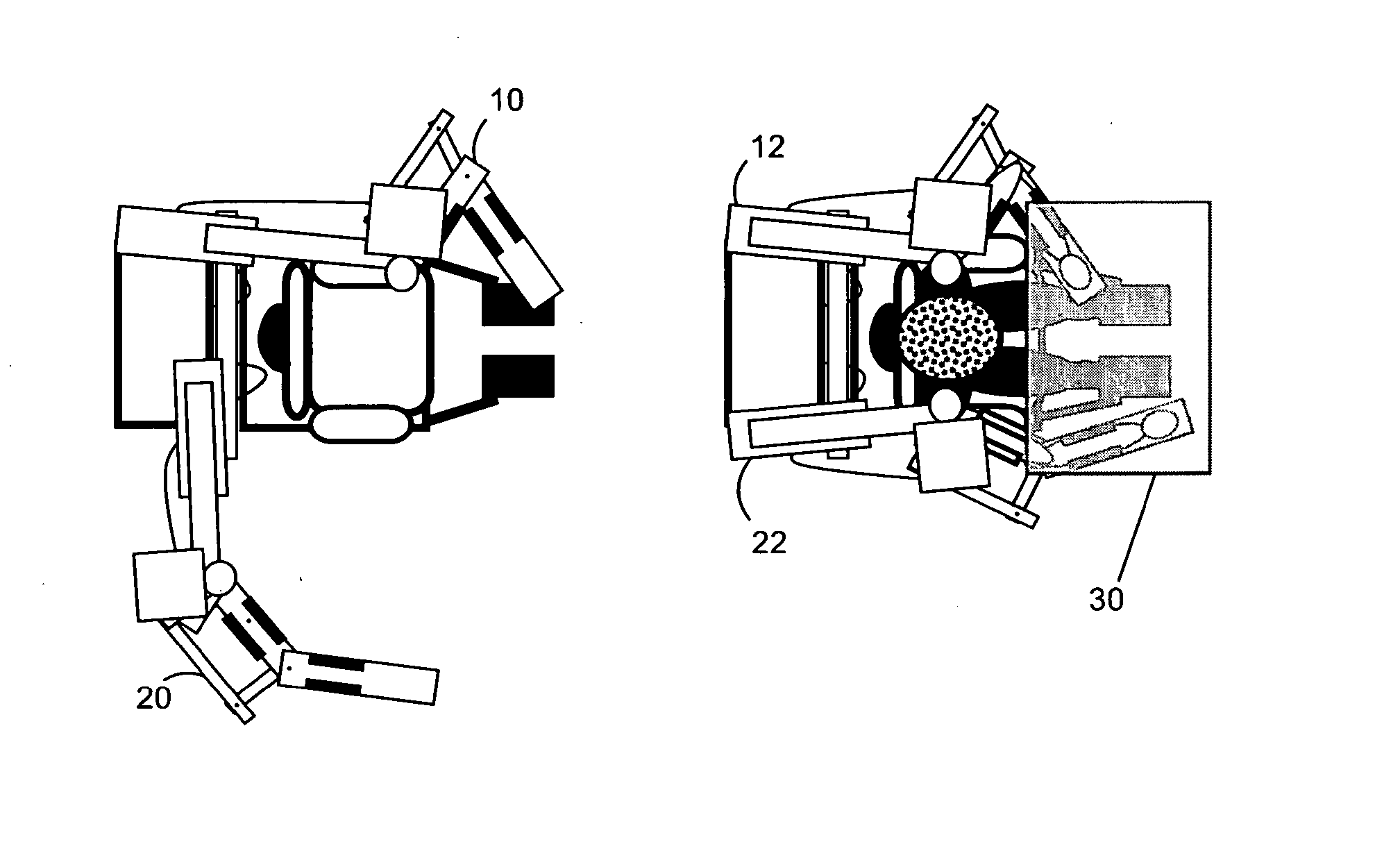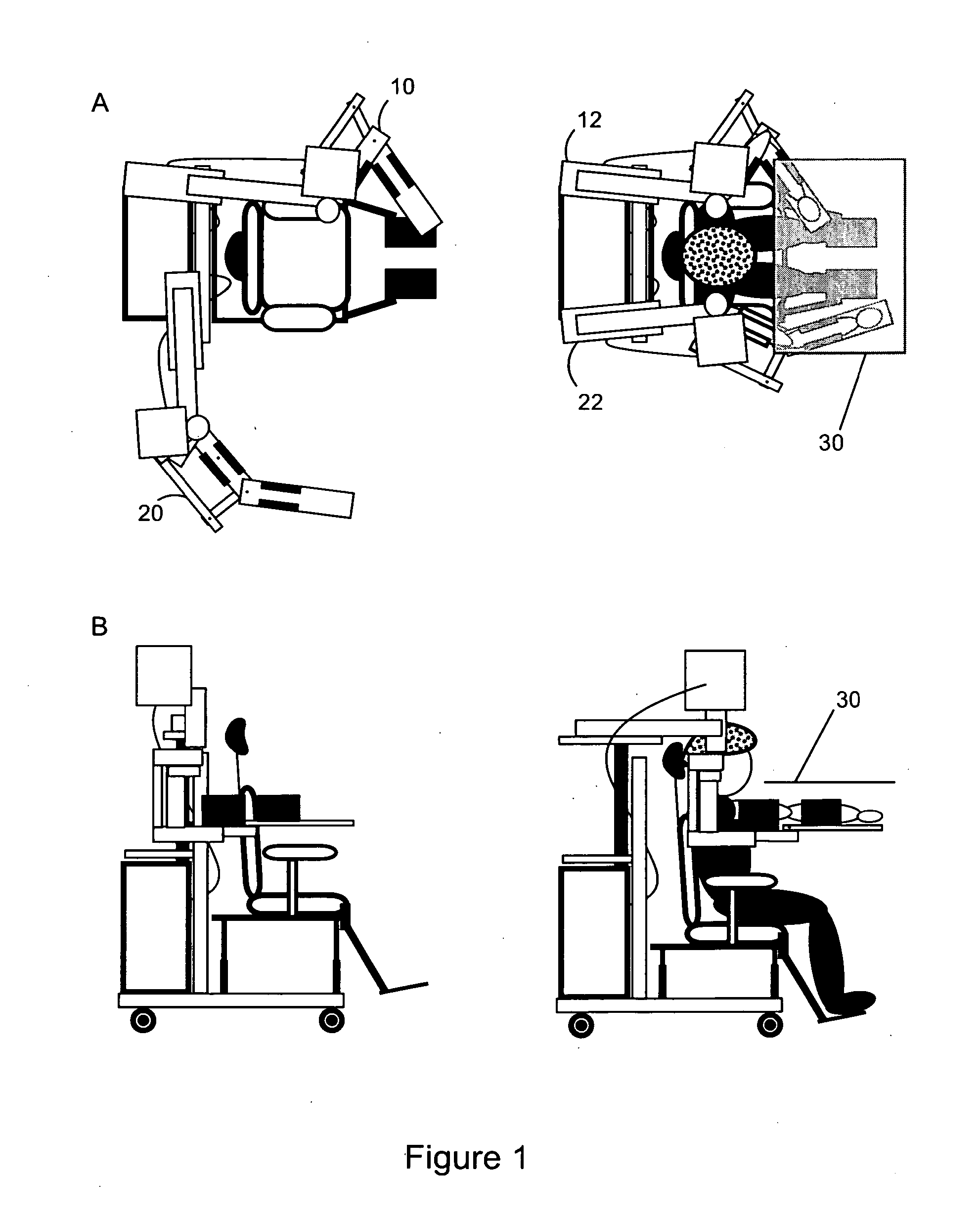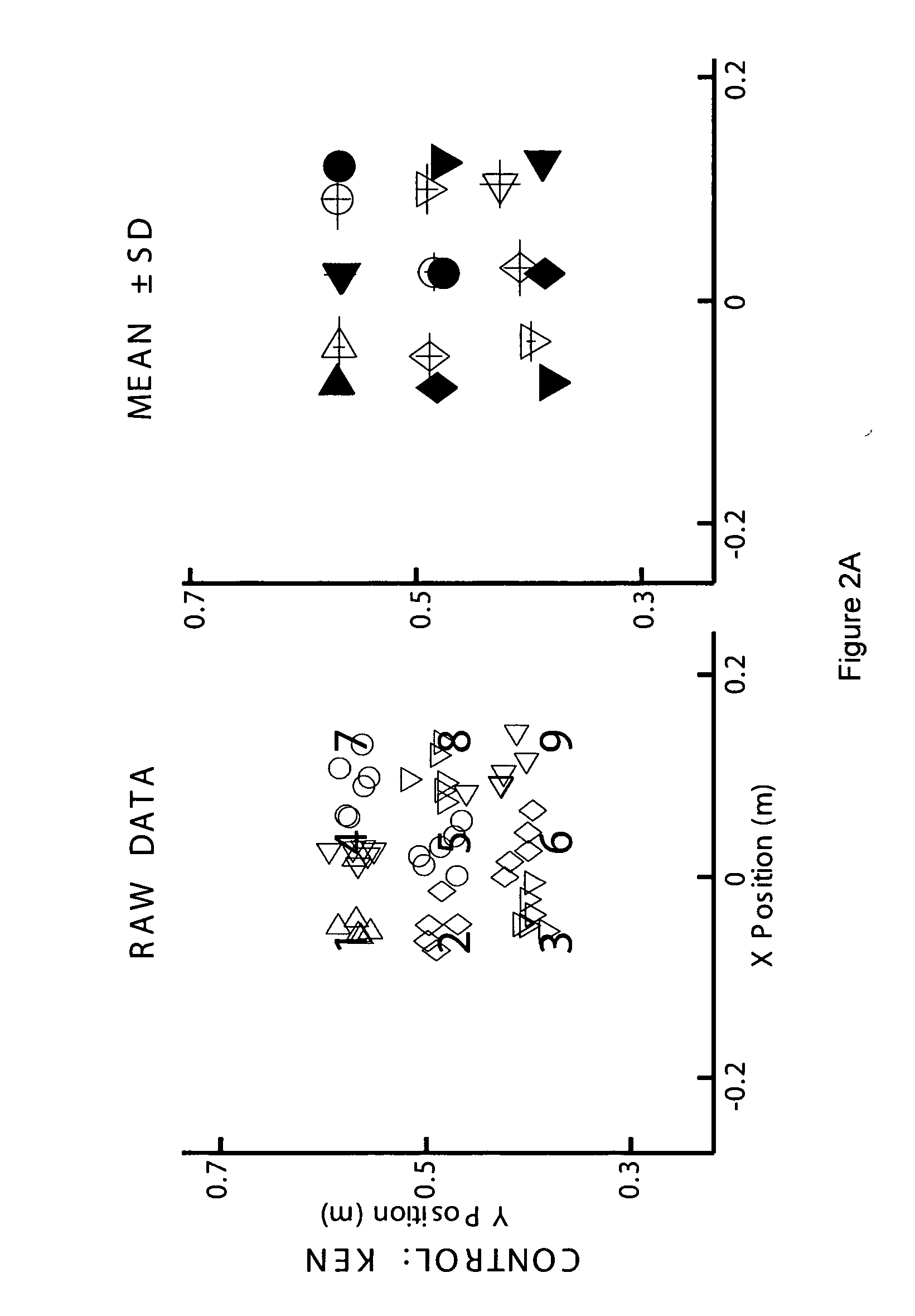Method and apparatus for assessing proprioceptive function
- Summary
- Abstract
- Description
- Claims
- Application Information
AI Technical Summary
Benefits of technology
Problems solved by technology
Method used
Image
Examples
example
[0079] The following example describes an embodiment of the invention wherein an apparatus having first and second robotic linkages were configured to attach to the upper arm and forearm portions of first and second arms of a subject. In this example, the ability of control and stroke subjects to perform a bilateral limb matching task was evaluated. This was done without the subjects being able to see their arms. The robotic linkage moved the paretic limb to a spatial location and geometry and the subject was asked to match this limb position and geometry with the non-paretic limb.
[0080] It should be noted that the task may also be performed with the apparatus moving the non-paretic limb and the subject actively matching with their paretic limb. As well, this task can be performed with or without vision of either or both limbs.
Apparatus
[0081] The apparatus consisted of a mechanical linkage attached to the upper arm and forearm of each limb of a subject (see FIGS. 1A and B). This...
PUM
 Login to View More
Login to View More Abstract
Description
Claims
Application Information
 Login to View More
Login to View More - R&D
- Intellectual Property
- Life Sciences
- Materials
- Tech Scout
- Unparalleled Data Quality
- Higher Quality Content
- 60% Fewer Hallucinations
Browse by: Latest US Patents, China's latest patents, Technical Efficacy Thesaurus, Application Domain, Technology Topic, Popular Technical Reports.
© 2025 PatSnap. All rights reserved.Legal|Privacy policy|Modern Slavery Act Transparency Statement|Sitemap|About US| Contact US: help@patsnap.com



